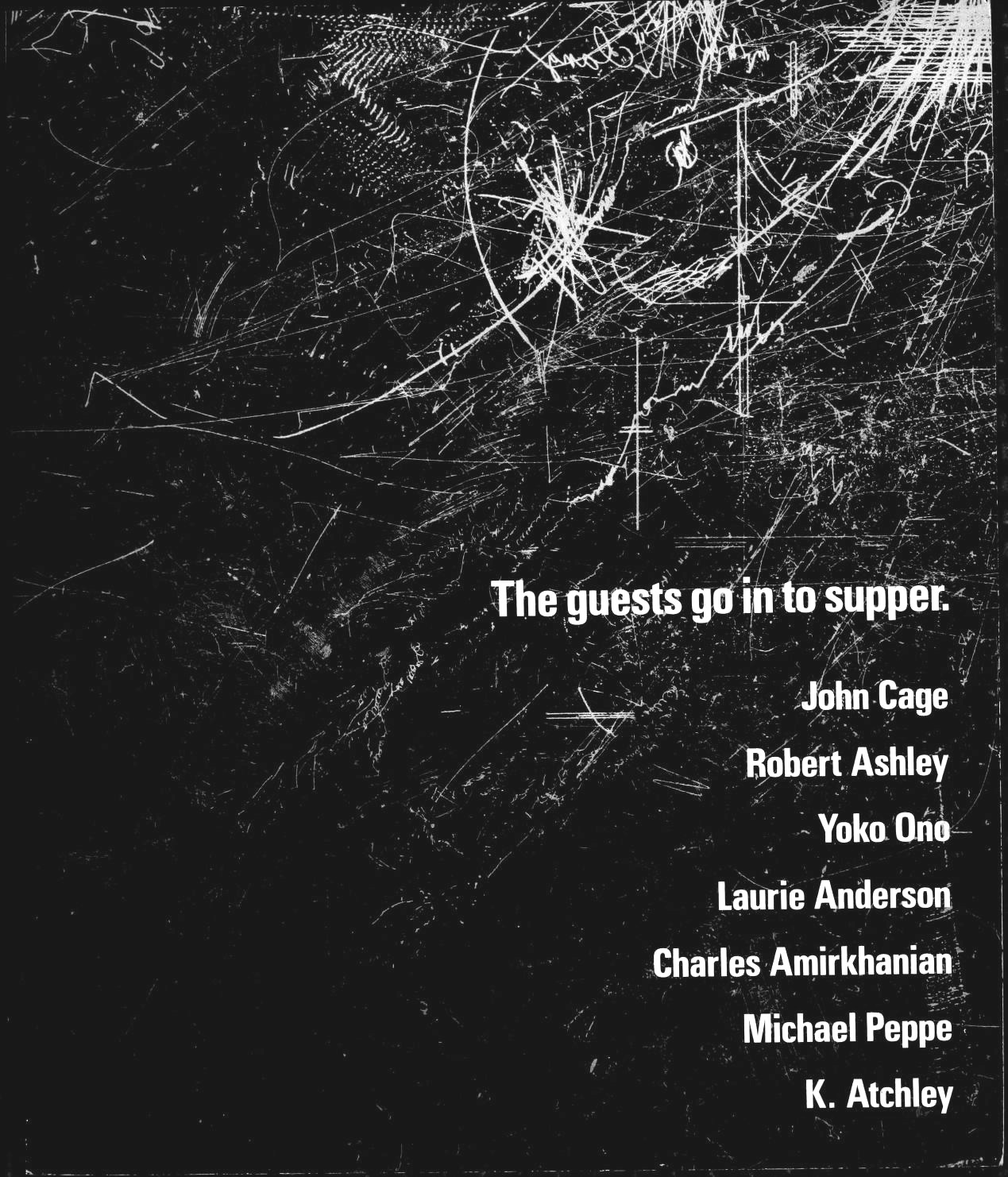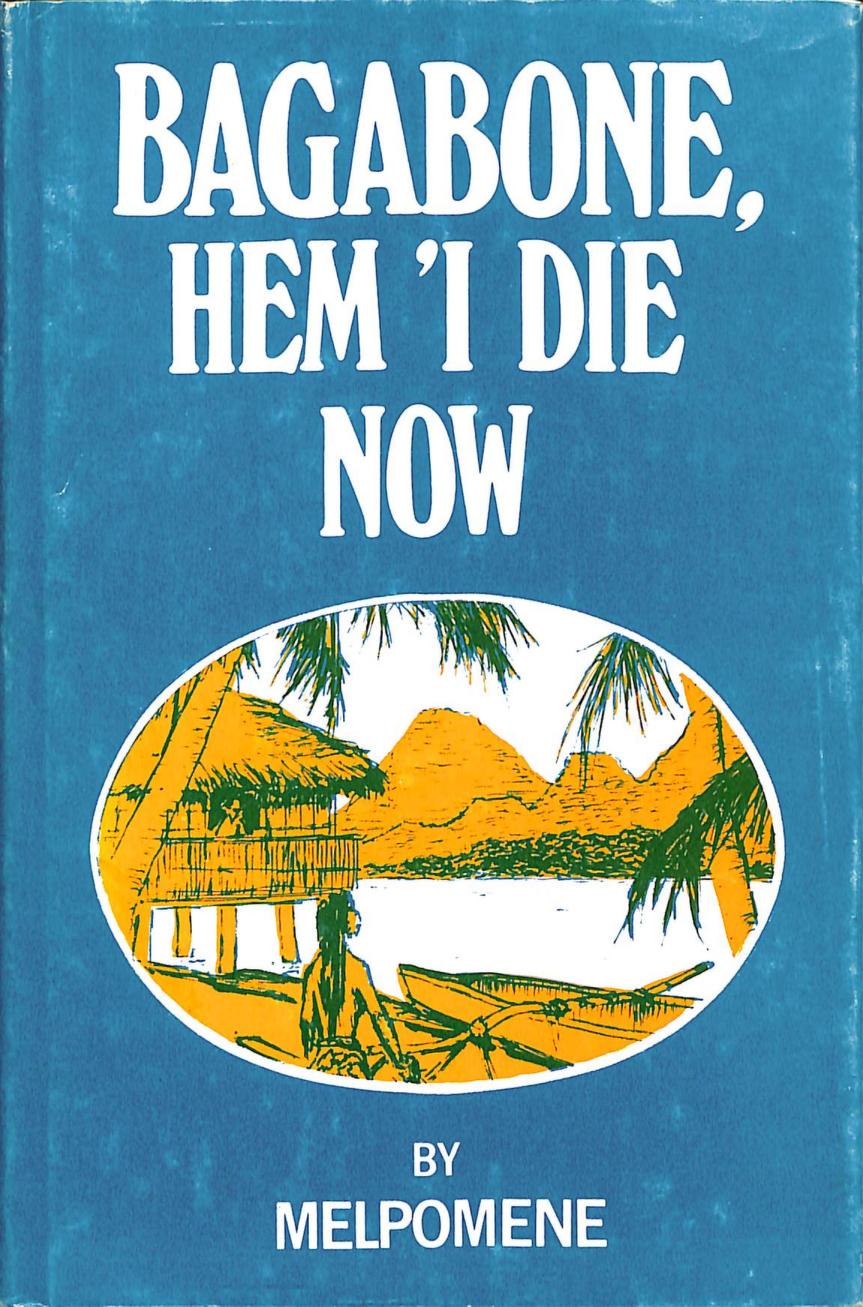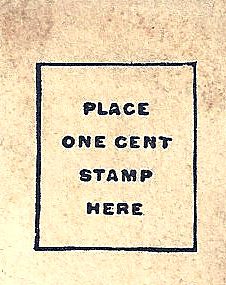The Guests Go in to Supper (1986)
Filed under book | Tags: · composing, composition, graphic score, music, notation, text

Featuring the works of seven composers, John Cage, Robert Ashley, Yoko Ono, Laurie Anderson, Charles Amirkhanian, Michael Peppe, and K. Atchley, who employ text as an integral part of their compositions, The Guests Go in to Supper is a collection of scores, texts, and interviews with the composers on their ideas on music, daily life, and the future’s possibilities.
Edited and designed by Melody Sumner, Kathleen Burch, and Michael Sumner
Foreword by Frances Butler
Introductions by Charles Shere
Publisher Burning Books, Oakland & San Francisco, 1986
ISBN 0936050055, 9780936050058
384 pages
Reviews: Mitchel Gass (Leonardo, 1988).
PDF (66 MB)
Comment (0)Melpomene: Bagabone, Hem ‘I Die Now (1980)
Filed under fiction | Tags: · artificial intelligence, generativity, hoax, language, linguistics, literature, text

“Bagabone, Hem ‘I Die Now (1980) is perhaps the first novel that was purportedly written by a computer.
The back flap of the dust jacket states this about the book’s origins: “Can a computer write a novel? To find out, some experts in literature, linguistics, and computers at the Institute of Science and Technology, Jagiellonian University, Krakow, programed a computer, Melpomene, with English verb patterns and semantic (i.e., meaning) units drawn from twentieth-century women writers, as well as D.H. Lawrence, James Joyce, and some ‘angry young men’ of the 1960s. Then they added some patterns and units from Pidgin English and French, and the astounding result is Bagabone, Hem ‘I Die Now. Melpomene, which is the name of the Greek muse of tragedy, picked the title; translated from Pidgin English, it means, ‘Bagabone (a character in the novel) is dying.'”
Following its publication, Computer World published an article (“Publisher Claims Computer Composed Novel”, 25 Aug. 1980, p. 23) effectively defeating the publisher’s claim about the work’s computational origins. In the article, AI experts deem the novel to be human-written, and another source reports that there is no ‘Institute of Science and Technology’ at Jagiellonian University. Moreover, due to its mode of operation, the publisher (Vantage Press) would apparently have been paid to print the book. The copyright holder for Bagabone was a human—an Englishman named G.E. Hughes—who could not be reached by Computer World. (Intriguingly, this copy of the book is inscribed by one ‘Eric Hughes’, though this could be coincidental.)”
Publisher Vantage Press, New York, 1980
ISBN 0533042496, 9780533042494
136 pages
via James Ryan (xfoml)
Commentary: Peter Swirski (2013), James Ryan (2017), Joanna J Bryson (2018).
PDF (40 MB)
Internet Archive
Amodern, 7: Ephemera and Ephemerality (2017)
Filed under journal | Tags: · archive, ephemera, ink, media, paper, social media, text, theatre

“Like some winged insects, ephemera – the plural of the Greek ephemeron – denotes things that last through the day. Maurice Rickards defined it as “the minor transient documents of everyday life” – bus tickets, business cards, bookmarks. Ephemera describes modern mass media forms such as the newspaper and radio broadcasts, as well as contemporary ones such as email and short message service. Ephemera haunts classical aesthetics, whose pretensions to cultural value and endurance can figuratively efface its own materiality and fragility. Ephemera similarly menaces concepts and practices of history, even when it serves as evidence of the past and the stuff of the archive. Indeed, ephemera problematizes memory itself: Wendy Hui Kyong Chun has theorized that digital media create an “enduring ephemeral” of constantly refreshing, regenerating information, introducing as much instability into computer programs as abides in putatively more fallible, degenerative human memory. With this observation, the paradox of ephemera – that it was meant to be disposable and fleeting, but is instead often kept and collected – comes into view as a central ambivalence of modern mediated life.”
With essays by Christina Svendsen, Mollie McFee, Priti Joshi, Kimberly Hall, Dennis Yi Tenen, Susan Zieger, Lindsay Brandon Hunter, and a conversation with Mita Mahato.
Edited by Priti Joshi and Susan Zieger
Publisher Concordia University and Lakehead University, December 2017
Creative Commons Attribution 3.0 Unported License

